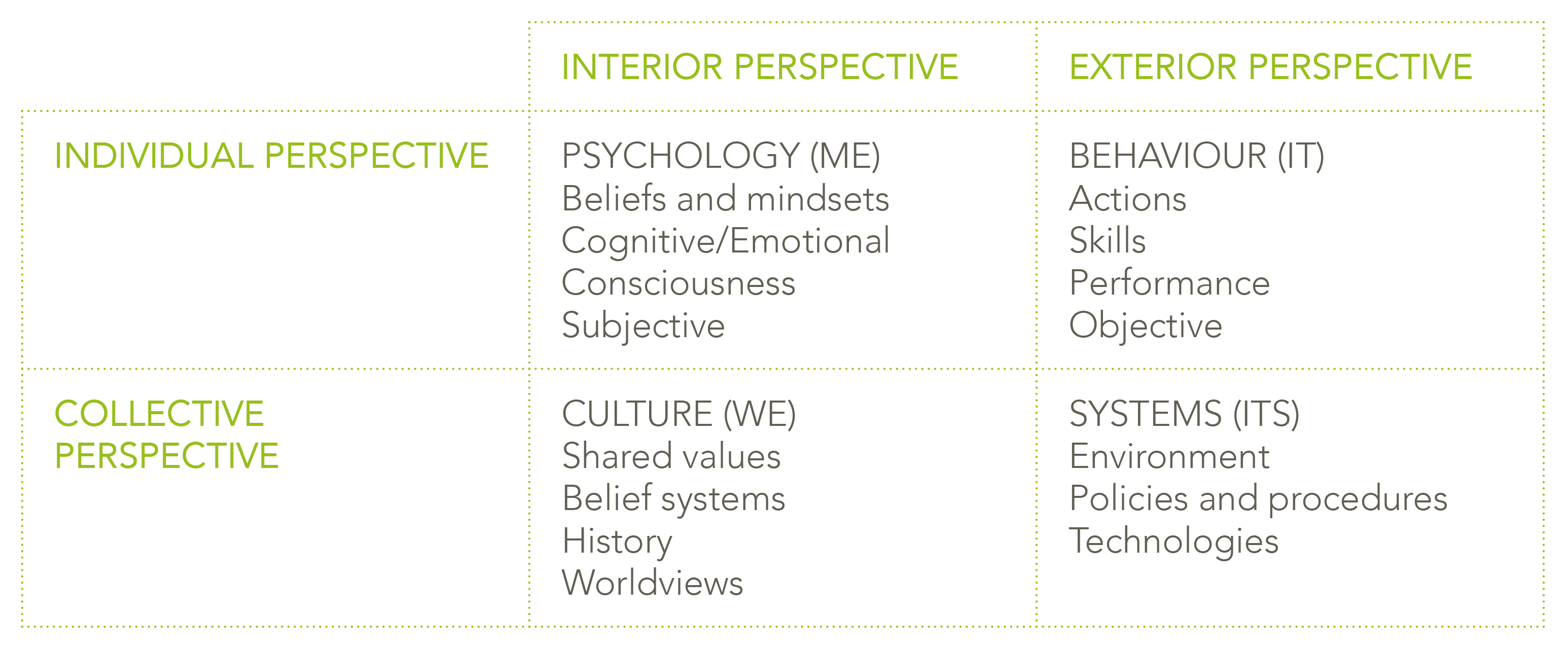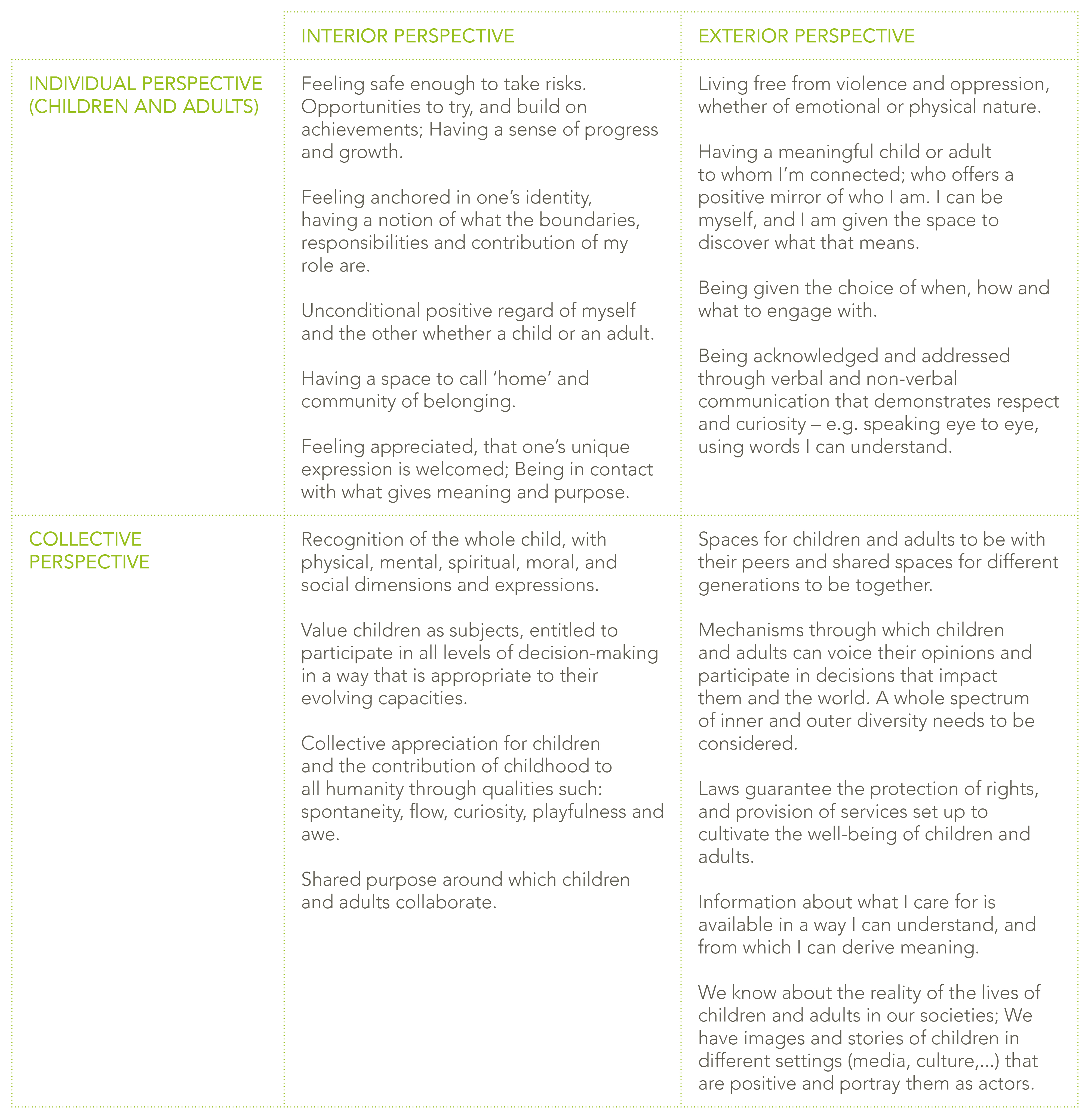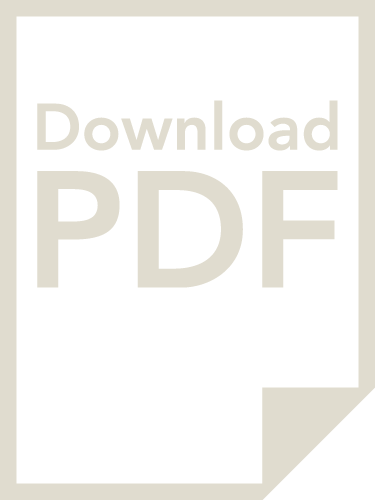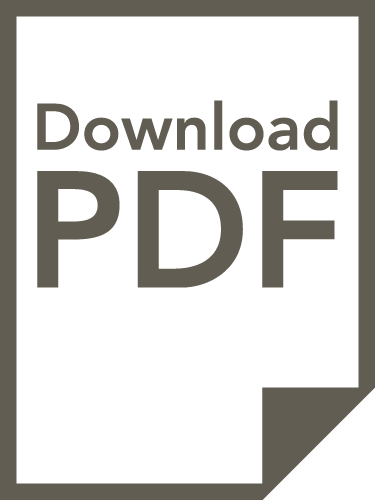
A magic recipe for seeing children as competent partners
by Maria Paz & Luís Manuel Pinto
-
Magic ingredients: Capacities that enable partnerships between children and adults
-
Examples from practice: ‘Education for Peace’ and ‘Children as Actors for Transforming Society’
1. Introduction: A ‘Partner Potion’
We started playing with the idea of creating a ‘magic potion’, or ‘partner potion’ – one that opens the hearts and minds of adults to the possibility of seeing children as potential and competent partners. What would be the ingredients? What would we need to learn as adults or unlearn? What do we need to do or stop doing? In this article we will explore such ‘ingredients’, the capacities we must nurture in order to enable participatory collaboration between adults and children. We will illustrate our proposition with our own experience of two programmes – ‘Education for Peace’, a school-based programme implemented in urban Paris and ‘Children as Actors for Transforming Society’, a global inter-generational community of child rights advocates that gathers every year to learn and to advance the agenda of mainstreaming child participation in decision-making, from local to global. We decided to ask children close to us, but who do not participate in either of the programmes, for their perspectives about partnering with adults and what they believe is needed for good collaboration. We conclude the article by offering a holistic perspective on capacities that contribute to supporting intergenerational relationships.
2. Magic ingredients: Capacities that enable partnerships between children and adults
When we started putting our ideas together for this article, we proposed answering the question ‘from our experience, what are the capacities needed by adults and environments, to see and relate to children as competent partners?’ We quickly found ourselves moving between factors that could be seen from two angles: one related to the environments, the external structures, spaces and mechanisms that create the necessary conditions for adults and children to relate to each other as equals, and the other deeply anchored attitudes of individuals and the shared cultural beliefs we hold about children and about ourselves.
Ken Wilber (2007) proposes that any question can be answered from four perspectives. For a deeper understanding one must approach the question objectively from the outside (tangible, measurable, external dimension) and inside (intangible, subjective, internal). One must also consider the question from the individual perspective, but also from how it connects to a larger context (collective).

Table 1. Adapted from Ken Wilber's four-quadrant model in ‘A Brief History of Everything’
We set ourselves the challenge of having an integral grasp of the question of what capacities are needed for children and adults to see and treat each other as equals in dignity, explored from the four perspectives.
Exterior: Systems and Behaviour
In recent decades there has been a great deal of investment in setting up structures and processes – at global and local level – that guarantee the place of each child in our society, while ensuring their protection and access to services that secure their healthy development. Legal instruments such as the UN Convention on the Rights of the Child (CRC), adopted in 1989 or the case of Ireland, which became the first country to include rights of all children in a constitutional amendment approved by national referendum in 2012, are incredible achievements. Despite their ratification of the CRC, many states have not yet translated it to their legal and policy frameworks that enable meaningful implementation, including the right to be listened to, and have their views taken seriously. The focus of creating systems and policies for the collective has seen its ramifications in regulating individual behaviour whether through soft (guidelines, recommendations) or hard measures (law). A good illustration is the movement to ban corporal punishment as a way to eliminate violence against children in education and home environments.
Interior: Culture and Attitude
Mechanisms and procedures are not sufficient to guarantee that adults see children as competent partners, which brings us to the interior perspective and the lenses of culture and individual attitude. There are few accounts in Western cultures of children’s involvement in making decisions that affected them or their lives in general (Ennew, 2000). Even today the culture of childhood is characterised by an adult-centred attitude in many aspects of life such as education, families and governance, whether local or national. Two shared cultural beliefs about childhood have become deeply embedded in our societies and represent important obstacles to partnership between children and adults: the culture of protection and the culture of ‘potentiality’.
When supporting the vision of children as the ‘property’ of adults, or objects of care, the culture of protection can be an excuse to limit the participation and involvement of children. This feeling of ownership is likely to be exacerbated when children and surrounding adults lack economic, social and political power. Added to this, is a culture of ‘potentiality’ that children are adults ‘in the making’, ‘the future of our societies’. Such statements deny children their active role in the present, not seeing them as competent to make change today.
We need a new culture of childhood and adulthood based on recognition, respect and mutuality. There are examples of cultures that have given children a central role in decision-making as an integral part of the culture. In the Andean culture children can take part in decisions about family life, the work they do, because they contribute to supporting the family and the community, as adults do, both by their work and the responsibilities they take.
3. Examples from practice: ‘Education for Peace’ and ‘Children as Actors for Transforming Society’
The ‘Education for Peace’ programme is based on the Pedagogy of Children’s Rights which through a specific pedagogical approach inspired by Janusz Korczak, Paulo Freire and John Dewey among others aims for children to live their rights, understand them and acquire the capacities necessary in order to empower themselves and act as citizens from the earliest age. This programme aimed to open spaces in schools where children could express themselves, acquire skills and create projects that would affect their lives and those of others, while introducing the idea of child participation in schools. The programme was implemented through workshops during school time, facilitated by volunteers in cooperation with teachers who had volunteered to participate with their classes.
One of the first things we noticed was that when we presented the programme, its aims and its ‘soul’, a natural selection occurred. Those who were not ready to open this space in which children would be considered as competent partners did not remain involved. This showed us the magnitude of the change needed. Facilitators were trained to build different skills, to both learn and unlearn at cultural, pedagogical and ‘attitudinal’ levels. Individuals and groups bring a unique collection of beliefs, values, interests, knowledge, experience and perspectives to planning, practice and relationships which was very challenging for the programme. They needed to be ‘in tune’ with the respect of Children’s Rights but more important to live those rights in the relationships with children.
In practice we used different channels of communication through questioning, debates, music, drawing, creating and imagining together. The position of the adult was not to be a teacher or to give all the directions and answers, but to be a facilitator to ensure a framework in which the children would feel free to express and create. Children were the actors of their learning through their experiences. For adults, a major part of their learning occurred through the contact with children: the more the adults listened and worked with children, the more natural it was for them to see children as competent partners.
Children appeared surprised and welcomed this new attitude from adults who listened and considered them. Once a space was opened for participation they would take ownership of it and create projects. Nevertheless, the programme faced many challenges, the most important happened with the education system, particularly with teachers' attitudes because they consider their sole mission to be teachers of subjects rather than as allowing children to be seen as competent partners. In this response, the programme facilitators saw the limits of their actions since the vision of the child’s participation must be everyone’s affair; to build trust, adults need to show coherence in their actions and words.
In terms of implementation of the ‘Education for Peace’ programme one main challenge involves communication and adjusting one’s attitude. In considering the capacities we adults need to build in order to perceive children as competent partners, we realise there is a need to build a whole new system of communication between adults and children. Seeing the other as a competent partner implies wanting to build a relationship with the other person, therefore wanting to respect them enough to adjust one’s attitudes and thoughts in order to make a link with them.
Children as Actors for Transforming Society – CATS
CATS is an international learning community of children, young people and adults that collaborate to explore and improve ways in which children, with all their diversity, participate in decisions impacting their lives. It has emerged out of an annual conference as a forum which models, celebrates and strengthens examples of equal partnership between children and adults, where both can be themselves and create the unexpected. Through its activities, CATS transforms both the attitudes of children, and towards children, so they are seen, heard and engaged in creating their environments – from local to global. CATS aims to develop and support a community of participatory practice, foster multi-stakeholder partnerships supporting children’s participation, be a ‘laboratory’ and example of good practice globally and advocate for the mainstream to integrate children and young people’s participation. There are about 300 participants every year, made up of delegations of children's and youth organisations that are frequently involved in advocacy for children's rights, as well as of families and individuals.
In the words of Julie Ward, a Member of the European Parliament who participated in the 2015 conference, ‘CATS is a “micro-society” aspiring to model the experience of partnership between children and adults for a better world’. Care for process and content work hand-in-hand, developed in synergy from design to evaluation.
Partnering with children, on an interpersonal level, as well as in creating mechanisms through which children can be involved in designing and implementing CATS has been at the heart of our collective learning. It has evolved from the first year in 2013 when we organised different activities by age group to experimenting with including all age groups in each activity, to then (since 2015) finding a balance both for small group sessions and workshops as well as the moments each day when all the participants are working (and playing) together. How to involve and engage the youngest in a way that would place them at the heart of the activities was a challenge we experienced from the beginning. The presence of younger children (‘Kittens’) was essential in a field where mostly children who are able to communicate and participate in ‘adult terms’ have the means to be heard. We concluded that groups of children aged from 3 to 6 and 6 to 11 should have a separate programme for part of each day. Over time we have developed ways – through play – of inviting the Kittens to play a more prominent role, acting as reporters and researchers, and leading activities for others as way to connect with various elements of the programme.
In its fourth edition, the CATS conference in 2016 is focusing on the recently agreed Sustainable Development Goals with the aim of influencing policy from local to global. We will take a step forward in modelling collaboration between children and adults, by creating a CATS Parliament, in which participants will develop key messages related to these goals. While developing the capacities of adults and children to create common messages with political implications, the conference will for the first time agree on a position in relation to the global agenda, in order to take an international and intergenerational voice beyond the conference.
We have learned a few lessons so far: it is important to allow safe spaces and time for interaction between children and adults, but also moments where each can be amongst their peers. We have also realised that the right mix of playfulness and responsibility is essential for everyone. CATS offers a safe, though stimulating context in which children and adults can tap into their inner resources. We are still grappling with the right balance between participation and protection. In the words of Jonathan Levy, founder of CATS, we must find ‘protection that enables, not restricts participation’. Participation is both a means and an end.
An intangible value of the CATS experience are the stories of personal transformation we have been able to collect over the past 3 years. We have witnessed children, such as the young person who found a sense of purpose in becoming a social media activist for the rights of children in alternative care, or the young person with mental disabilities who blossomed from preferring not to be noticed in her first conference, to the following year when she took the microphone on the main stage and talked about her experience of advocating for the rights of children living in institutions. One by one, such stories contribute to a ‘capital of inspiration’ that informs the collective belief in the power of participation and engagement in the lives of children.
4. What children said about partnership …
Taking seriously our intention to reflect on the capacities needed for adults to treat each other as competent partners, we decided to take advantage of both of us being back in our ‘homelands’ to ask children close to us – friends or family – about what it meant to be a partner, and how they felt about partnerships between children and adults. In Bolívia we interviewed Manuela (15), Vicente (10), brother and sister, and Mihailo (9), Matilde (11) and Camila (16), close family friends. In Portugal, we interviewed Diogo (7), and Sofia (14), brother and sister. We structured our conversations around the theme of partnership through the following questions:
-
When do you feel that you are seen as a partner (by adults)?
-
When do you see adults as partners?
-
What do you think children and adults need to learn to treat each other as partners?
-
What would the world look like if children and adults worked as competent partners?
‘Partner’ was not a concept easily associated with their relationship with adults. It was certainly easier to see adults being partners to children, but harder to remember moments in which they felt treated as partners. Answers to the questions described a (good) partner as someone that supports you. Sometimes someone that helps ‘you achieve a goal’, other times it’s just about ‘being together’. Honesty was important to the extent that being a partner sometimes meant to ‘not do things only to make the other happy’.
Partnering with adults meant being given responsibility, doing things that are usually reserved for adults, overcoming roles of what an adult or a child would normally do. This was experienced by most as something that made them feel confident, capable, intelligent. Partnership also meant being listened to, having a space to express oneself. It meant being open to learning from one another and valuing each other’s perspectives. Most of them agreed that children have more imagination than adults.
The very experience of listening to the children was as rich as their answers including making an effort to suspend judgement concerning their ability to analyse the world, as well as their confidence (or lack of). We were surprised by some of the answers. We were confronted with our own beliefs when we heard Sofia say that if adults and children were to treat each other as partners all the time then ‘things would get out of control’. As child rights advocates, we somehow expected a more ‘rebellious’ attitude towards adults, realising that those thoughts said more about our own projections than the opinion of the children in front of us.
5. Cooking the potion: A new story for humanity
From our experience we feel that the legal framework provided by the UNCRC is missing ‘the human side’, by which we mean that in order to be able to implement it, adults and children need to have access to an environment and an education that will allow them to express themselves, to be confident persons who believe in themselves and others, and to share a common purpose. The ‘missing’ piece would be to pursue the internal and external development of each person which will allow them to communicate differently, to see each other differently and hence to respect each other and the world differently.
However attractive a ‘magic potion’ for partnership between children and adults would be, we have realised through our practice in ‘CATS’ and ‘Education for Peace’ that there may not be such a thing as a ‘standard recipe’. However, we know some of the ingredients, and can offer them as a basis on which adults and children can start exploring the best models of partnership for their own specific contexts.
Returning to Wilber's framework, in the table below we offer some illustrative examples of a holistic approach to capacities, conditions and environments that contribute to supporting intergenerational relationships.

Table 2
In some ways the key issue is not where you start i.e. sensitising individual perception or creating the environmental conditions. It is the fact that there will be different people paying attention to different dimensions and having different starting points, but we must not forget that change must happen both internal and externally, in individuals and collectively in societies.
Authors
Maria Paz is a Bolivian woman who has been passionate about Children’s Rights and Child Participation from a very young age. She studied in the French School in La Paz, Bolivia and moved to Paris in 2004 to study International Law and International Cooperation. Her voluntary work in different NGO’s led her to specialise in the Education and Children’s Rights sector. She worked for ‘Initiatives of Change France’ as the field coordinator of the ‘Education for Peace Programme’ in Paris for the last 5 years. She is now living in La Paz, Bolivia, where she is developing child participation projects and doing field research.
Luís loves learning (and alliterations). He has put this passion at the service of human development – individuals and organizations – as a facilitator and designer of educational programmes. His longstanding focus has been on exploring the influence of individual differences in identity, learning and communication processes, on participation and interpersonal relationships, especially those between children, young people and adults. Luís has an avid interest in theatre, movement and image which he uses as ways to explore new forms of participation and learning. Luís Manuel Pinto is part of the Universal Education Foundation, working to support a Learning for Well-being approach, and heading Strategy and Development for C.A.T.S.
References
Adams, M., Bell, L. & Griffin, P. (eds) (2007). Teaching for diversity and social justice, Oxford: Routledge.
Ennew, J. (2000). ‘The history of children's rights: whose story?’, Cultural Survival Quarterly, 24(2), 44-48.
Flasher, J. (1978). ‘Adultism’, Adolescence, 13(51), 517.
Jara, C. (2012). Una aproximación hermenéutica a la Convención sobre los Derechos del Niño [A Hermeneutics Approach to the Convention on the Rights of the Child]. IFEJANT Instituto de Formación para Educadores de Jóvenes, Adolescentes y Niños Trabajadores de América Latina y El Caribe [Training Institute for Educators of Youth, Adolescent and Child Workers in Latin America and the Caribbean], Perú.
Liebel, M. & Munoz, M. (2009). Infancia y Derechos Humanos: Hacia una Ciudadanía participante y protagónica [Childhood and Human Rights: Towards a participative and protagonist citizenship].
IFEJANT Instituto de Formación para Educadores de Jóvenes, Adolescentes y Niños Trabajadores de América Latina y El Caribe [Training Institute for Educators of Youth, Adolescent and Child Workers in Latin America and the Caribbean], Lima, Perú: Monsignor Germán Schmitz.
Liebel, M. & Saadi, I. (2012). La participación infantil ante el desafío de la diversidad cultural [Child participation facing the challenge of cultural diversity], Desacatos, (39), 123-140.
Plataforma de Co-partes Peruanas de Terre des Hommes [Terre des Homme’s Platform for Peruvian Co-parts] (2014). Convención de los Derechos del Niño (CDN), Cultura Andino-Amazónica, y Buen Vivir: Auditoria de la CDN desde la mirada de los Niños y Niñas Indígenas [Convention on the Rights of the Child (CRC), Andean-Amazonian Culture, and Good Life: Audit of the CRC from the Perspective of Indigenous Children]. Germany.
Reynaert, D., Bouverne-De Bie, M. & Vandevelde, S. (2010). ‘Children, rights and social work: rethinking children’s rights education’, Social Work & Society, 8(1), 60-69.
Wilber, K. (2007). A Brief History of Everything, Boston: Shambhala Publication



